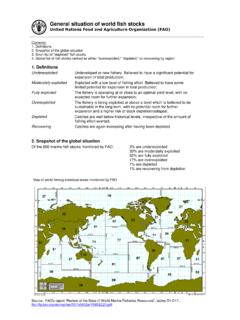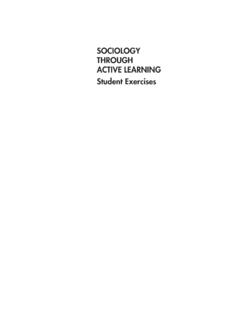Transcription of Joint Declaration on the Doctrine of Justification
1 Joint Declaration on the Doctrine of Justification By the Luther an World Feder ation a nd t he Catholic Church Preamble 1. The Doctrine of just ification was of central importance for the Lutheran Reformation of the sixteenth century. It was held to be the first and chief article 1 and at the same time the ruler and judge over all other Christ ian doctrines. 2 The Doctrine of Justification was particularly asserted and defended in its Reformation shape and sp ecial valuation over against the Roman Catholic Church and theology of that time, which in turn asserted and defended a Doctrine of justifica tion of a diffe rent ch aracter.
2 From the Reformation persp ective , justifica tion was the crux of all the disputes. Doctrinal condemnations were put forward both in the Lutheran 1 The Smalcald Articles, II,1; Book of Concord, 292. 2 Rector et judex super omnia genera doctrinarum Weimar Edition of Luther s Works (WA), 39,I,205. LUTHERISCHER WELTBUND F D RATION LUTH RIENNE MONDIALE FEDERACI N LUTERANA MUNDIAL Confess ions3 and by the Roman Catholic Church s Council of Trent. These condemnations are st ill valid today and thus have a church-dividing effe ct. 2. For the Lutheran tradition, the doctrin e of Justification has retained its special status.
3 Conse quently it has also from the beginning occupied an important place in the offi cial Lutheran-Roman Catholic dialogue. 3. Special attention should be drawn to the following reports: The Gospel and the Church (1972)4 and Church and Just ification (1994)5 by the Lutheran-Roman Catholic Joint Commiss ion, Ju stifica tion by Faith (1983)6 of the Lutheran-Roman Catholic dialogue in the USA and The Condemnations of the Reformation Era Do They Still Divide? (1986)7 by the Ecumenical Working Group of Protestant and Catholic theologians in Germany. Some of these dialogue reports have been offi cially received by the churches.
4 An important example of such rece ption is the binding response of the United Evangelical-Lutheran Church of Germany to the Condemnations study, made in 1994 at the highest poss ible leve l of ecclesiastical recognition together with the other ch urches of the Evangelical Church in 4. In their discu ss ion of the Doctrine of justifica tion, all the dialogue reports as well as the resp onses show a high degree of agreement in their approaches and concl usions. The time has therefore come to take stock and to summarize the results of the dialogues on justifica tion so that our church es may be informed about the ove rall results of this dialogue with the necessary accuracy and brevity, and thereby be enabled to make binding decisions.
5 3 It should be noted that some Lutheran churches include only the Augsburg Confession and Luther s Small Catechism among their binding confessions. These texts contain no condemnations about Justification in relation to the Roman Catholic Church. 4 Report of the Joint Lutheran-Roman Catholic Study Commission, published in Growth in Agreement (New York; Geneva, 1984), pp. 168-189. 5 Published by the Lutheran World Federation (Geneva, 1994). 6 Lutheran and Catholics in Dialogue VII (Minneapolis, 1985). 7 Minneapolis, 1990. 8 Gemeinsame Stellungnahme der Arnoldshainer Konferenz, der Vereinigten Kirche und des Deutschen Nationalkomitees des Lutherischen Weltbundes zum Dokument Lehrverurteilungen kirchentrennend?
6 , kumenische Rundschau 44 (1995): 99-102; See also the position papers which underlie this resolution, in Lehrverurteilungen im Gespr ch, Die ersten offiziellen Stellungnahmen aus den evangelischen Kirchen in Deutschland (G ttingen: Vandenhoeck & Ruprecht, 1993). LUTHERISCHER WELTBUND F D RATION LUTH RIENNE MONDIALE FEDERACI N LUTERANA MUNDIAL 5. The present Jo int Declaration has this intention: namely, to show that on the basis of their dialogue the subscr ibing Lutheran ch urches and the Roman Catholic Church9 are now able to articu late a common understanding of our Justification by God s grace through faith in Christ.
7 It does not cover all that either church teaches about Justification ; it does enco mpass a co nse nsus on basi c truths of the Doctrine of justifica tion and shows that the remaining differences in its explication are no longer the occ asion for doctrinal condemnations. 6. Our Declaration is not a new, independent prese ntation alongside the dialogue reports and docu ments to date, let alone a replacement of them. Rather, as the appendix of sources shows, it make s repeated reference to them and their arguments. 7. Like the dialogues themselves, this Joint Decl aration rests on the conviction that in overcoming the earlier controversi al questions and doctrinal condemnations, the ch urches neither take the condemnations lightly nor do they disavow their own past.
8 On the contrary, this Declaration is shaped by the conviction that in their respective histories our churches have come to new insights. Developments have take n place which not only make possible, but also require the church es to exa mine the divi sive questi ons and condemnations and se e them in a new light. 1. Biblica l Message of Just ificati on 8. Our common way of listening to the word of God in Scr ipture has led to su ch new insi ghts. Together we hear the gospel that God so loved the world that he gave his only Son, so that eve ryone who believe s in him may not perish but may have eternal life (Jn 3:16). This good news is set forth in Holy Scripture in various ways.
9 In the Old Test ament we lis ten to God s word about human si nfulness (Ps 51:1-5; Dan 9:5f; Eccl/Qo 8:9f; Ezra 9:6f) and human disobedience (Gen 3:1-19; Neh 9:16f,26) as well as of God s rig hteousness (Isa 46:13; 51:5-8; 56:1 [cf. 53:11]; Jer 9:24) and judgment (Eccl/Qo 12:14; Ps 9:5f; 76:7-9). 9 The word church is used in this Declaration to reflect the self-understandings of the participating churches, without intending to resolve all the ecclesiological issues related to this term. LUTHERISCHER WELTBUND F D RATION LUTH RIENNE MONDIALE FEDERACI N LUTERANA MUNDIAL 9. In the New Test ament diverse treatments of righteousness and Justification are found in the writings of Matthew (5:10; 6:33; 21:32), John (16:8-11), Hebrews (5:3; 10:37f), and James (2:14-26).
10 10 In Paul s letters also, the gift of salva tion is desc ribed in va rious ways , among others: for freedom Christ has set us free (Gal 5:1-13; cf. Rom 6:7), reconci led to God (2 Cor 5:18-21; cf. Rom 5:11), peace with God (Rom 5:1), new cr eation (2 Cor 5:17), alive to God in Christ Jesus (Rom 6:11,23), or sa nctified in Christ Jesus (cf. 1 Cor 1:2; 1:30; 2 Cor 1:1). Chief among these is the just ification of sinful human beings by God s grace through faith (Rom 3:23-25), which came into particular prominence in the Reformation period. 10. Paul sets forth the gospel as the power of God for salva tion of the perso n who has fallen under the power of sin, as the message that proclaims that the righteousness of God isrevealed through faith for faith (Rom 1:16f) and that grants justifica tion (Rom 3:21-31).


